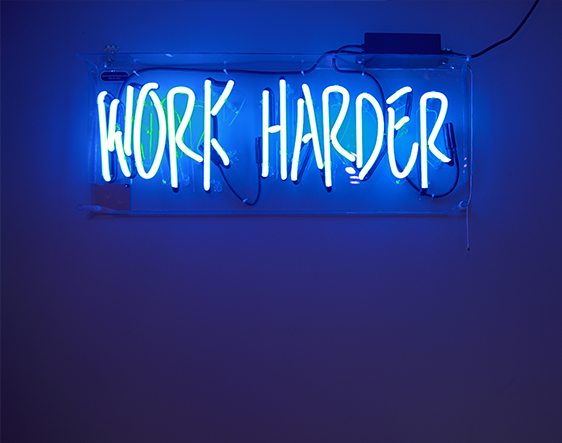How do you best motivate your frontline staff to drive direct impact on sales results? Many will say there are three effective methods: money, money and more money. Contrary to popular belief however, the issue of financial motivation is not as simple as that. As it happens, regardless of whether the spoils from the sales hunt are shared out fairly or not, their distribution almost invariably has some negative consequences.
There are of course many ways to organise sales compensation programs. At one extreme, there are companies that regularly pay bonus at an even percentage of base salary – to all sales people. Because the bonus in that case effectively becomes an integral, guaranteed component of the salary, any motivation it was originally meant to provide turns out short-lived. The American psychologist Frederick Herzberg, who specialised in employee motivation studies, would say that this type of bonus does not serve to motivate but, especially if it is too low, it actually demotivates (becoming what he calls a “hygiene factor”). In simple terms, a bonus scheme of this kind is like an office watercooler: nobody jumps in joy at the fact it is there, but if it were to go, we would soon face a frustrated workforce.
In fact, we have to consider that bonuses in general, including those closely linked to performance, could be associated with a certain demotivating factor. It is easy to imagine an employee who, after receiving a bonus for several months or years in a row, is suddenly refused one. Can there be a more obvious reason to become frustrated? In addition, rewards and commissions schemes in sales organisations heavily affect team dynamics. Although individual financial incentives generally have a stimulating effect (particularly when it comes to selling products with short sales cycles), they are neither conducive to a mutually supporting team, nor to sharing of know-how. “Pure” individual reward schemes often restrict the natural potential in some sales professionals to help others. Exchange of experience, joint brainstorming sessions, spontaneous deliberations and “figuring out” what can be sold and where, are in these circumstances quite uncommon.
Managers naturally do their best to counteract this challenge – through workshops, team-building events, etc., but it would be difficult to say how much of this “imposed” collaboration is down to honest internal motivation of salespeople themselves – as each of them is effectively rewarded to only look after their own business. As a result, these methods of motivation often turn out to be ineffective. Below, however, are two tried and tested ideas that may provide sales leaders with some food for thought.
Trade union of the unrewarded
Competitions for sales teams are a popular motivational tactic used by sales leaders. One problem that is intrinsic to all of them, however, is that only about 10 percent of salespeople are winners, while the remaining 90 percent end up empty-handed. Ironically, those in the losing majority are in a fairly comfortable situation – not only are they not isolated in their lack of success, but their group is decidedly larger than the winning group, which often becomes alienated. In addition, experience shows that the highest growth in sales is typically not achieved by the best salesperson from whom you can learn, but by the runner-ups who significantly increase their results thanks to appropriate assistance and motivation. Taking the above into consideration, it sometimes pays to carry out an experiment and reverse the rules of the game by creating a competition for salespeople in which the majority (e.g. 80 percent) wins. These types of competitions, typically involving rewards of lower monetary value, are perceived as highly motivating by those who tend to remain at the rear. Who would want to be among the few individuals who didn’t succeed and missed out on celebrating with the majority? By moving the reward threshold downwards, we can provide motivation to those trailing behind, who have the highest potential to obtain significant increases in sales, rather than those already close to the maximum of what is achievable.
Break the Pareto principle!
Despite the use of various preventive measures, the distribution of sales often closely resembles the Pareto principle: 20 percent of sales professionals are responsible for 80 percent of the overall revenue. Magnifying that is the fact that implementing a strict individual sales motivation system leads to internal competition amongst the salesforce. This could of curse be considered desirable if the team is young, keen to learn and ambitious. However, in the case of experienced salesforce whose impact on the overall sales number is substantial, the question of how to best use their potential gains on importance. Creating an internally competitive culture and basing the incentive structure solely on individual results, we are actually discouraging experienced team members from share their expertise with the weaker members of the pack.
To counter this, companies – often at great expense – employ external coaches and trainers who organise workshops or shadow salespeople on client visits – with no guarantee that they are able to provide tangible value. The consultants employed are typically generalists, unfamiliar with the peculiarities of the sector, product family, or company culture – each of which is governed by its own laws, and involves subtle idiosyncrasies affecting the overall sales outcomes. Why not change the rules slightly and reward the salesforce for the results of their colleagues? Entering the Polish market, one Japanese company introduced the “three-parts” principle. A third of the bonus is for your individual result, a third for the result of your team and a third for the sales from the entire region. This method resulted in natural cooperation of the entire team and rapid development of shared know-how. The salesforce were keenly phoning each other to discuss sales methods, exchange ideas and obtain advice.
Putting all salespeople in the driver’s seat in this way can accelerate the development of know-how, result in new ideas and create a team which immediately reacts to market changes. Equally importantly, this incentive policy can give rise to spontaneous coaching sessions: the salespeople will provide on-the-job training to one another without a penny being spent on external trainers and coaches. Naturally, the devil is in the details and all incentive programmes need to take into consideration the specificity of the sector, company and the target population itself. These programmes do not come without their challenges, not least in getting the board’s buy-in to these unorthodox methods. It is a price, however, that we should be prepared to pay if we want to continuously raise the bar and steadily increase our sales. As William Clement Stone once said: “The reason so few people are successful is no one has yet found a way for someone to sit down and slide uphill”.







